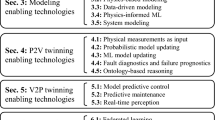Abstract
To study an entity the entire jack-up performs as a total system with close interdependency and high level of integration of a myriad of subsystems supporting each individual function. All subsystems should be arranged in regular geometric space with clear regional division according to their respective functions. The “building block” such as arrangement makes it feasible to apply modular design method while the integration and conflicts among subsystems offer an arena for game theoretic analysis. All the contradictions between subsystems should be resolved bye the designer. Here we present a game theoretic analysis methodology, which based on the basic principles of game theory, through the establishment of matrix-mode game models to describe and analyze engineering design tasks. By using this method the optimization process in various fields of expertise can be effectively coordinated and controlled, and the parallel design patterns can be achieved to some extent. Taking account of the impact of commercial or technical activities in platform’s life cycle, time line is considered in the early stage of design process which provides more convenience for efficient upgrade and reconfiguration. Some second-hand three-legged jack-up upgrade design process is used as an example to illustrate the utility of the method.
Similar content being viewed by others
References
Goldan M. The application of modular elements in the design and construction of semi-submersible platforms [D]. Nederlands: Delft University of Technology, 1985.
Rappold K. Modular designs highlight several new rigs [J]. Oil and Gas Journal, 1995, 93(49): 64–66.
Baldwin C Y, Clark K B. Managing in an age of modularity [J]. Harvard Business Review, 1997, 75(5): 84–93.
Ulrich K, Tung K. Fundamentals of product modularity [J]. American Society of Mechanical Engineers, Design Engineering Division, 1991, 39: 73–79.
Tseng T L, Huang Chun-che. Design support systems: A case study of modular design of the set-top box from design knowledge externalization perspective [J]. Decision Support Systems, 2008, 44(4): 909–924.
Gershenson J K, Prasad G J, Allamneni S. Modular product design: A life cycle view [J]. Journal of Integrated Design and Process Science, 1999, 3(4): 13–26.
Gu P, Sosale S. Product modularization for life cycle engineering [J]. Robotics and Computer-Integrated Manufacturing, 1999, 15(5): 387–401.
Newcomb P J, Bras B, Rosen D W. Implications of modularity on product design for the life cycle [J]. Journal of Mechanical Design, Transactions of the ASME, 1998, 120(3): 483–491.
Sosale S, Hashemian M, Gu P. Product modularization for reuse and recycling [J]. American Society of Mechanical Engineers, Design Engineering Division, 1997, 94: 195–206.
Gershenson J K, Prasad G J. Modularity in product design for manufacturing [J]. International Journal of Agile Manufacturing, 1997, 1(1): 99–109.
Ishii K. Life-cycle engineering design [J]. American Society of Mechanical Engineers, Design Engineering Division, 1995, 81: 39–45.
Moberg A, Finnveden G, Johansson J, et al. Life cycle assessment of energy from solid waste. Part 2. Land filling compared to other treatment methods [J]. Journal of Cleaner Production, 2005, 13(3): 231–240.
Anon. Life cycle assessment [J]. Ports and Dredging, 2005, 64: 21–25.
Zust R, Caduff G. Life-cycle modeling as an instrument for life-cycle engineering [J]. CIRP Annals-Manufacturing Technology, 1997, 46(1): 351–354.
Westkaemper E, Alting L, Arndt G. Life cycle management and assessment: Approaches and visions towards sustainable manufacturing [J]. CIRP Annals-Manufacturing Technology, 2000, 49(2): 501–522.
Sandberg M, Boart P, Larsson T. Functional product life-cycle simulation model for cost estimation in conceptual design of jet engine components [J]. Concurrent Engineering Research and Applications, 2005, 13(4): 331–342.
Olapiriyakul S, Caudill R J. A framework for risk management and End-of-Life (EOL) analysis for nanotechnology products: A case study in lithium-ion batteries[C]//IEEE International Symposium on Electronics and the Environment. Washington DC, USA: IEEE, 2008: 1–6.
Gu P, Slevinsky M. Mechanical bus for modular product design [J]. CIRP Annals-Manufacturing Technology, 2003, 52(1): 113–116.
Lai X, Gershenson J K. Representation of similarity and dependency for assembly modularity [J]. International Journal of Advanced Manufacturing Technology, 2008, 37(7–8): 803–827.
Zheng Xuan-liang, Lin Yan, Ji Zhou-shang. Ship cabin layout design using game theory [J]. Journal of Marine Science and Technology, 2008, 13(4): 446–454.
Zheng Xuan-liang, Lin Yan, Ji Zhou-shang. Collaborative multidisciplinary decision making based on game theory in ship preliminary design [J]. Journal of Marine Science and Technology, 2009, 14(3): 334–344.
von Neumann J, Morgenstern O. Theory of games and economic behavior [M]. Princeton: Princeton University Press, 1944.
Nash J F. Equilibrium points in N-person games [J]. Proceedings of the National Academy of Sciences, 1950, 36: 48–49.
Xiao A, Zeng S. Collaborative multidisciplinary decision-making using game theory and design capability indices [J]. Research in Engineering Design, 2005, 16(1–2): 57–72.
Bellman R E, Zadeh L A. Decision making in a fuzzy environment [J]. Management Science, 1970, 17(4): 209–215.
Author information
Authors and Affiliations
Corresponding author
Additional information
Foundation item: the Liaoning BaiQianWan Talents Program (No. 2007186-25)
Rights and permissions
About this article
Cite this article
Zheng, Xl., Wang, Yl. & Lin, Y. Real-time life-cycle modular design method based on game theory for jack-up. J. Shanghai Jiaotong Univ. (Sci.) 15, 504–511 (2010). https://doi.org/10.1007/s12204-010-1040-0
Received:
Published:
Issue Date:
DOI: https://doi.org/10.1007/s12204-010-1040-0




